Virginie Barré
Born in 1970
Lives and works in Douarnenez
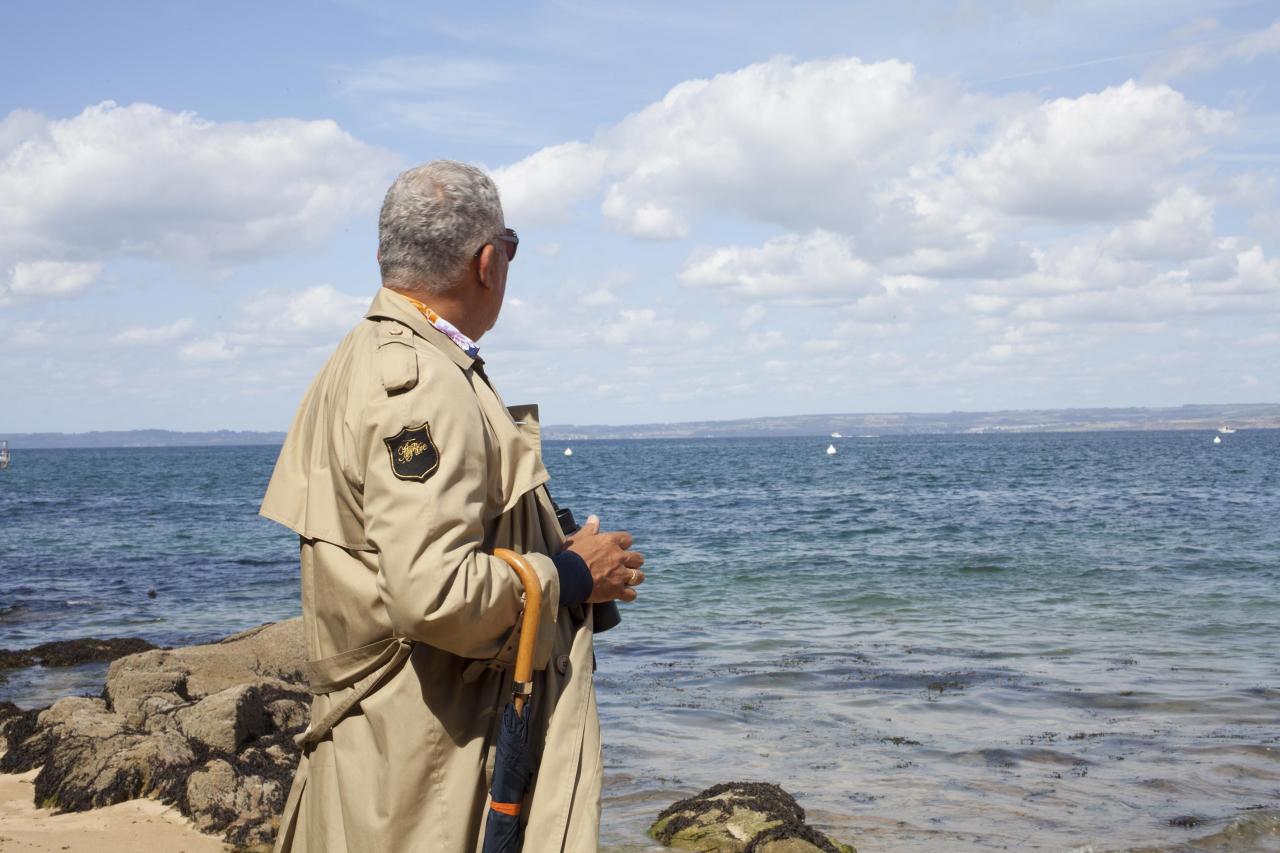
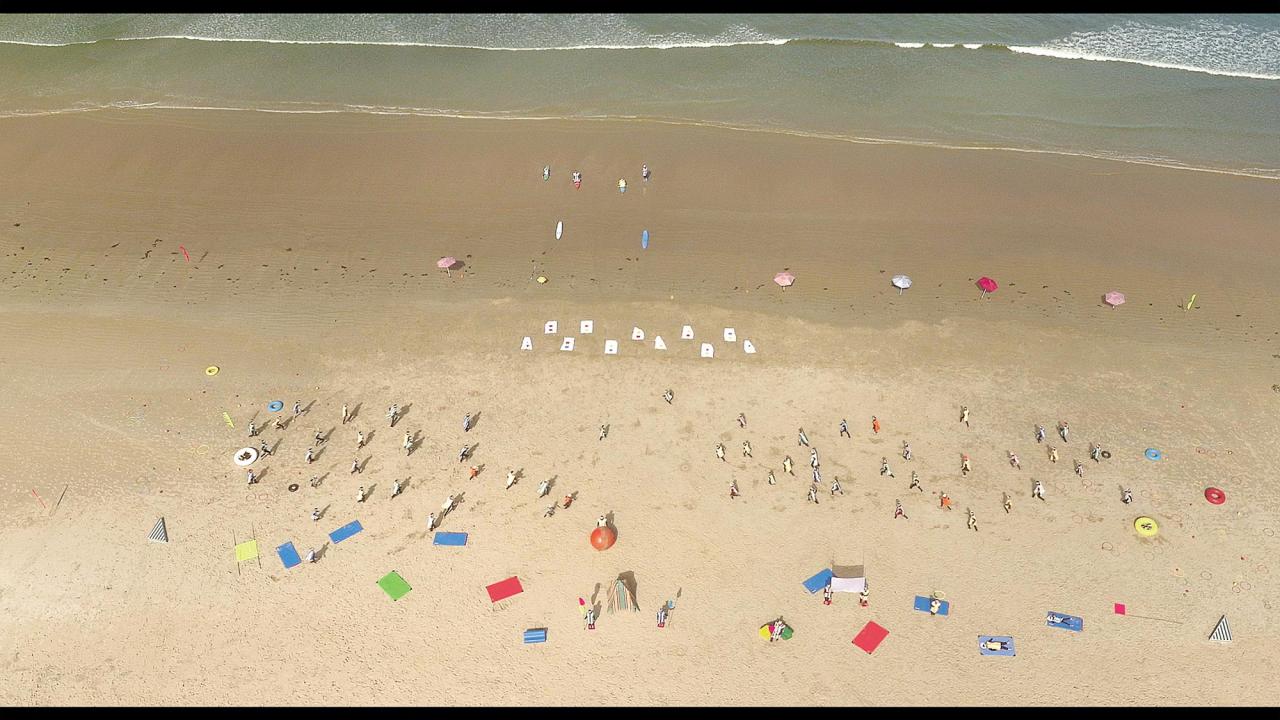
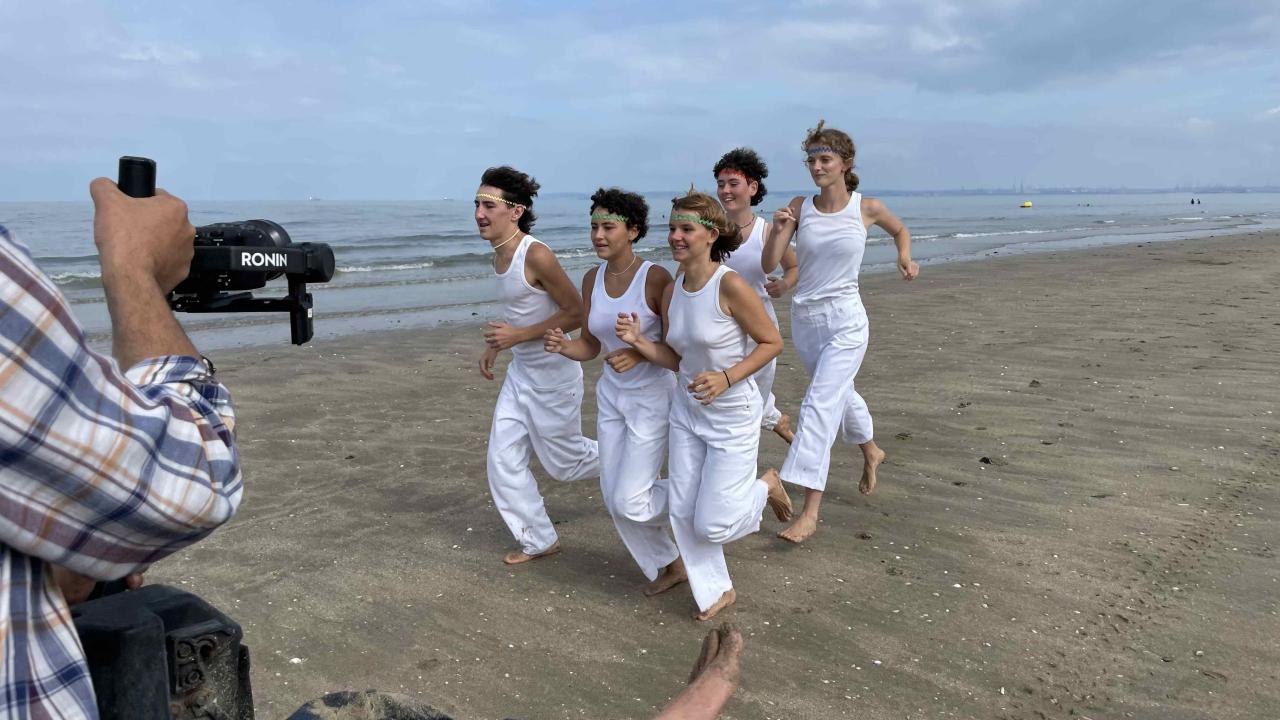
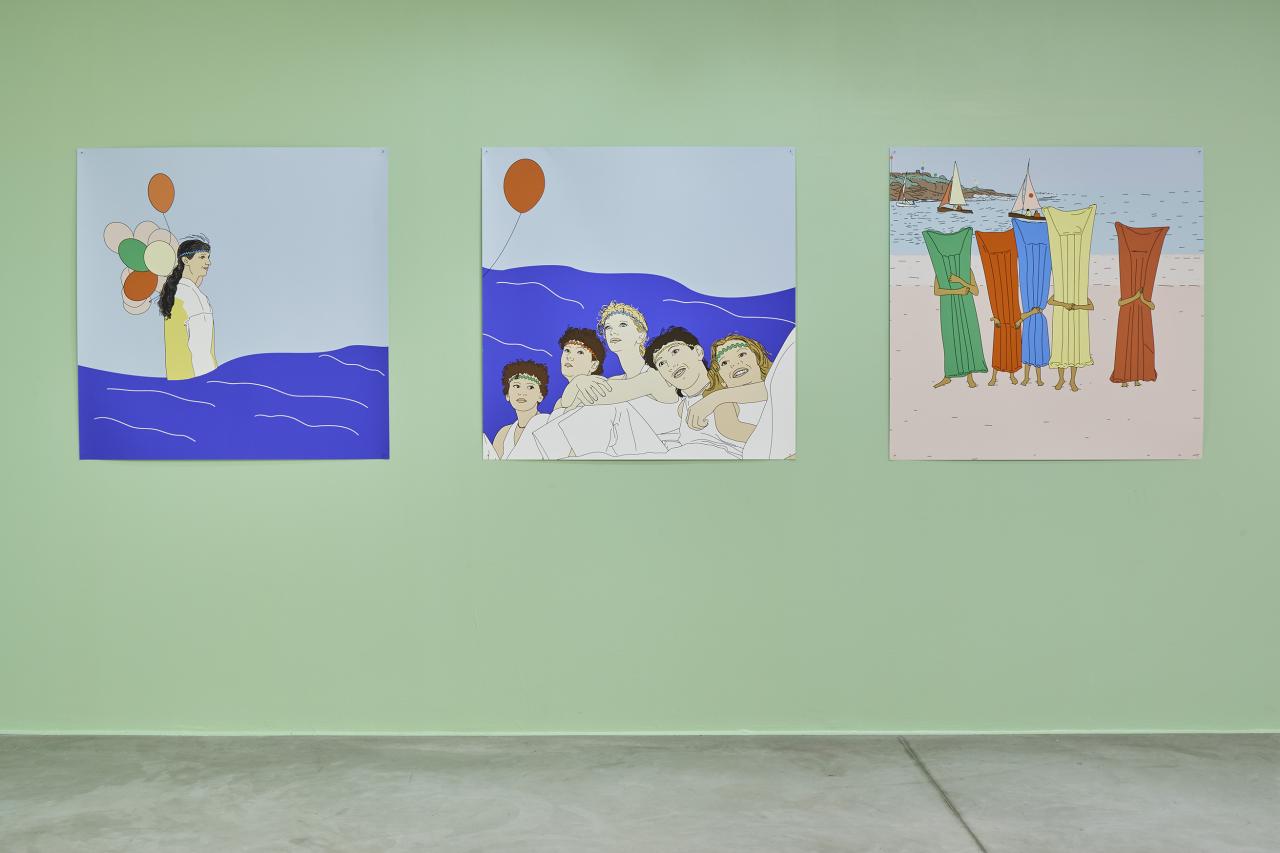
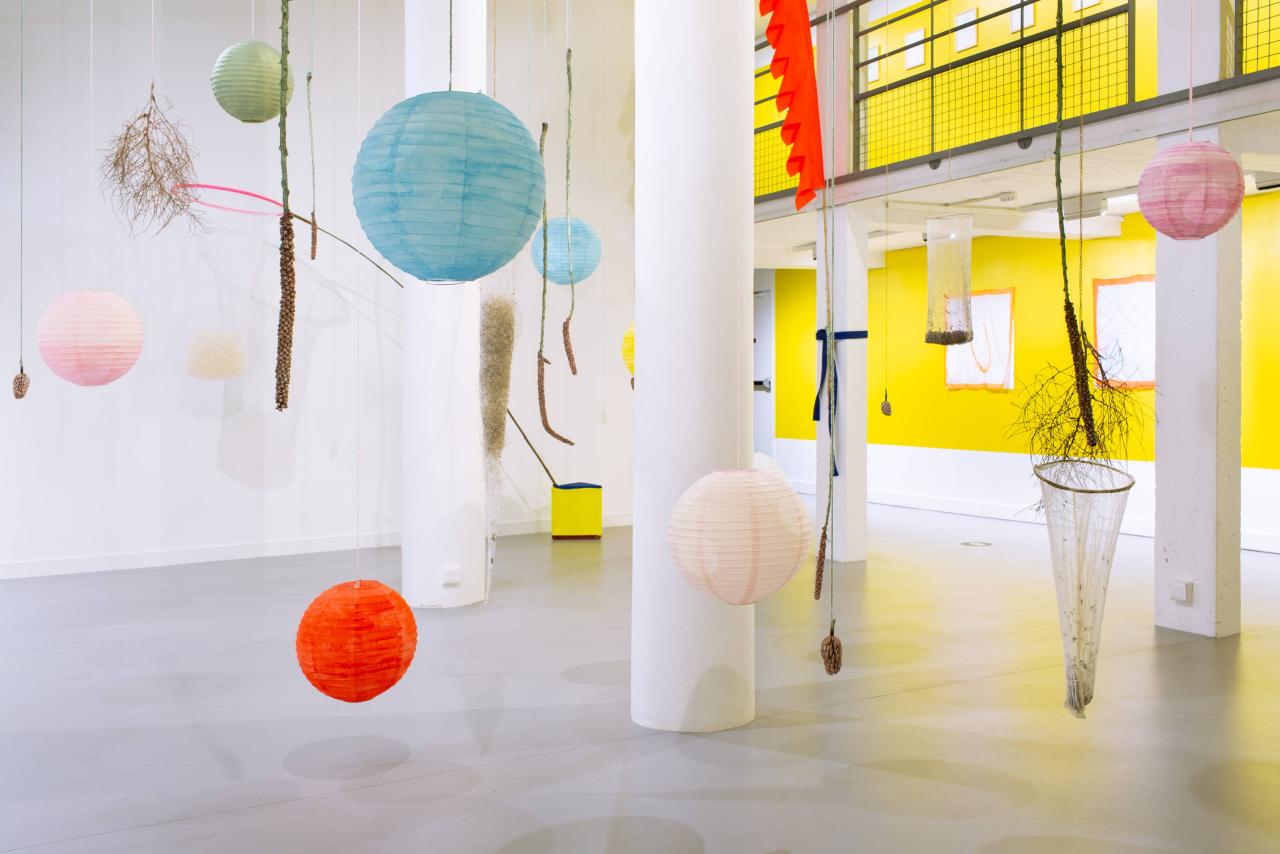
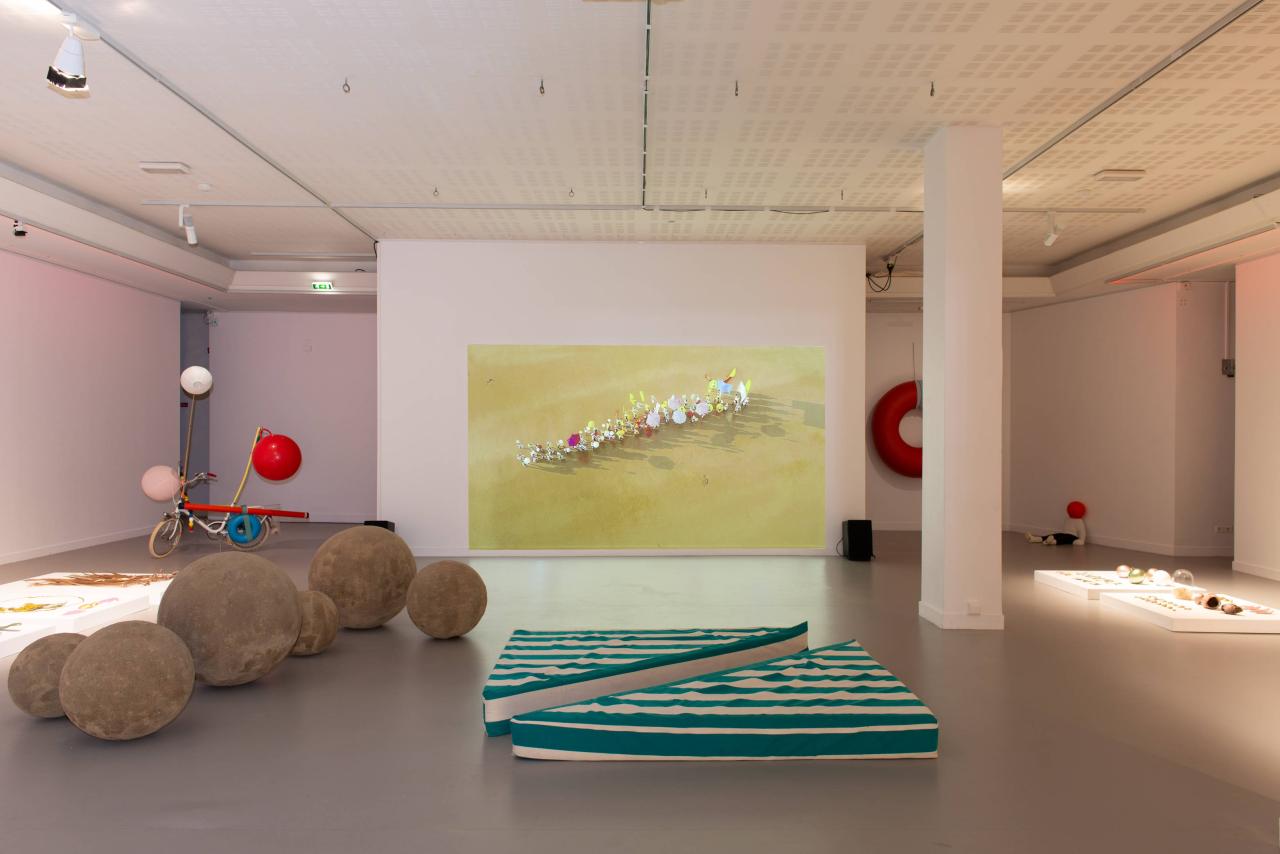
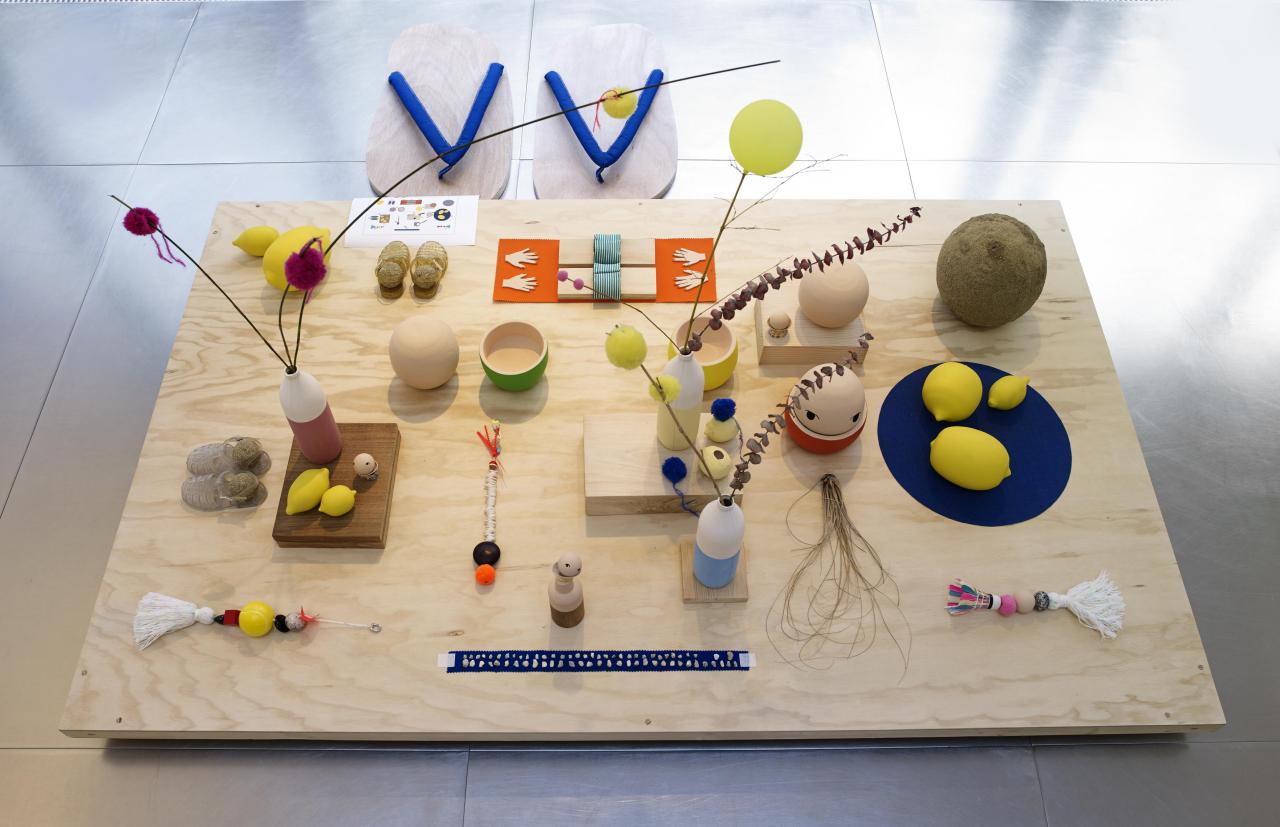
Active since the mid-1990s, Virginie Barré has strikingly mastered the art of the mise-en-scène. The young artist creates installations comparable to “freeze frames”, in which mannequins imply unlikely scenarios – break-ins, assassinations (Pulp, 1998; Help Agence Jestin Robert, 2000), strange costumed meetings (Les Gras, 2004) – all moments that seem to have just taken place, or are perhaps still ongoing. The spectator bears witness to these mysterious tragedies in suspense, death and terror flirting with the grotesque. Her mannequins, whose theatrical attitudes outweigh any concern for hyperrealism, sometimes bear the brunt of a biting irony (Fat Spiderman, 2002; Fat Bat, 2005). Long seen in the wake of Appropriationism, the universe of Virginie Barré is structured by her Cinephilia – her major influences being the nouvelle vague, Brian De Palma, Michelangelo Antonioni, Stanley Kubrick, Federico Fellini, Martin Scorsese, and the Japanese animator Hayao Miyazaki – as well as her interest in graphic novels. She herself has realised comic strips from the early 2000s, bringing together real and fictional characters. Cinematographic techniques are clearly present in her black and white graphic works that employ a clear line. Reverse angles and ellipses prevail in her work, as seen in a series based strictly on contemporary creation and protagonists, beyond geographic and cultural remoteness (Warriors Apsaroke & maison de maître du Bauhaus, Walter Gropius, 1925–1926, 2006). She transposes extracts from storyboards or images from filming sessions into her drawings, revealing, for example, intimate moments shared between an actress and her son. The woman – artist, actress and mother – as well as the child and its imagination are, in fact, familiar passengers in her art.
In 2012 V. Barré picked up a camera on the occasion of the first film written and realised by Claire Guezengar and Florence Paradeis (Odette Spirite, 2013). Beyond their narrative and formal particularities, her short films (La Forme des rêves, 2013; Le Rêve géométrique, 2017) are embedded with the obsessions found in her work as a whole – mockery and childhood, as well as dreams and the faraway. Objects that she rummages for or makes are used at the service of her filmed narratives. Heavily involved in collectives, she invites other artists to collaborate in her universe – some of whom have graduated from the École supérieure des beaux-arts de Quimper, where she teaches – as well as her two young daughters, friends and relatives from Douarnenez, where she lives. The Breton shores are never far; they occupy a determining role in the synopses. La Cascadeure, a mini-series written and produced with Romain Bobichon and Julien Gorgeart in 2018, embodies the fascinating alloy of all the aforementioned obsessions. In recent years and in parallel to her foray in the field of filmmaking, more abstract installations, assemblages of manufactured and handmade objects, arise in her practice. Cosmogonies staged like visual alphabets and nourished by her enduring interest in Japanese culture recall an earlier series of hanging modules (Charades, 2009). In 2017–2018 FRAC Bretagne (Rennes) organised a solo exhibition of recent works by the artist curated by Catherine Elkar. Virginie Barré is represented by the gallery Loevenbruck (Paris), the gallery AND (Barcelona) and the production company 36secondes (Rennes).
Marie Chênel
© Adagp, Paris